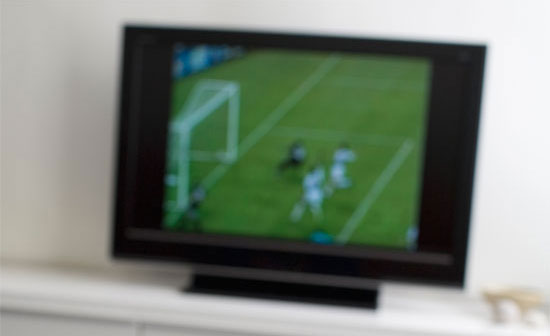A 20-year study of network and cable by USC & Purdue sociologists find men take 96% of sports news in 2009.
Even the ESPN Ticker gives women the short shrift – 96.4 percent of the information scrolling along the bottom of the screen was dedicated to only men’s sports.
The finding is part of a 20-year study of sports coverage released today by University of Southern California sociologist Mike Messner and Purdue University sociologist Cheryl Cooky.
Though it wasn’t surprising to discover that men’s sports gets more coverage, it was eye opening when researchers found that women’s sports accounted for less than 2 percent of network news and ESPN Sportscenter.
“There’s a message that sports is still for, by and about men,” Messner said. “When will the news catch up?”
Just as shocking is that as more women than ever participate in all levels of sports, coverage of their gender is drastically declining. In 2004, network affiliates dedicated 6.3 percent to women’s sports. Last year it dropped to 1.6 percent.
“News programs are supposed to be a window to the world and there is a journalistic responsibility to reflect that,” said Messner, an expert in the sociology of sports.
In 1971, 294,000 high school girls played interscholastic sports. Today 3.1 million play, much closer to the 4.4 million boys who play high school sports.
Yet network affiliates ran 60 stories on men’s NCAA basketball in March 2009. There were zero stories about women.
It’s not that generous coverage of men’s sports leaves no time for women. The researchers found that newscasts routinely air light sports features, such as a story about a hamburger with 5000 calories and 300 grams of fat at a minor league baseball park in Michigan.
The discrepancy is important, Messner said, as it reinforces the historical stereotype that sports proves men are superior to women, that the women’s product isn’t the same quality or would not have the same mass appeal. Messner points out those arguments have been used before, such as when African Americans weren’t considered good enough to compete in Major League Baseball.
The study, Gender in Televised Sports: News and Highlights Shows, 1989-2009, can be downloaded below.
As with the 1989, 1993, 1999 and 2004 studies, the central aim of the current study was to compare the quantity and quality of TV news and highlight shows’ coverage of women’s versus men’s athletic events. Each time researchers analyzed three two-week segments (a total of six weeks) of televised sports news coverage on each of three Los Angeles local network affiliates. Second, they studied ESPN’s SportsCenter, replicating their focus on this sports highlights show that they began in 1999 and continued in 2004.
The study is sponsored by the USC Center for Feminist Research.

